
About 300 years ago, in 1712, Tsar Peter the Great declared Saint Petersburg the capital of Russia. Peter had traveled in Western Europe, and was convinced the Russia of his times was a backwards nation that could learn a lot from Western Europe. He also believed that Russia could be a great naval power, and the location of St. Petersburg, at the mouth of the Neva river as it flows into the Gulf of Finland, gave it access to the Baltic sea. He had founded the Peter and Paul fortress near the mouth of the Neva river in 1703.


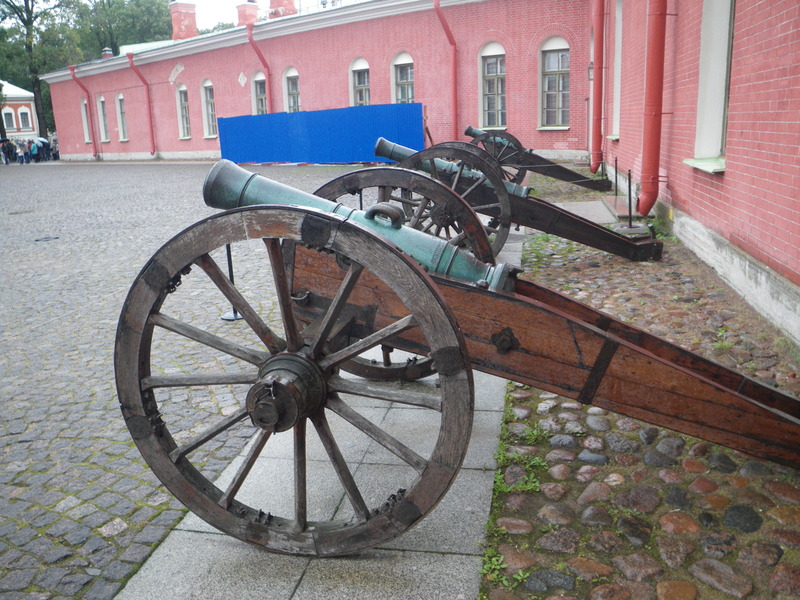

Inside the fortress is the Peter and Paul cathedral, where most of the Tsars since the 1700s are buried, including Peter the Great and the last Romanov, Nicholas II, and his family.





Long after the time of Peter the Great, the city was renamed Petrograd. In 1917, the first shots of the Russian Revolution were shot in Petrograd. In 1924, the city was renamed Leningrad. During World War II, Nazi German forces advanced towards Leningrad. With the help of their somewhat reluctant Finnish allies, they blockaded the city for over two years, officially for 872 days. The Finns took some land that had belonged to Russia, but refused to attack Leningrad. All who could left Leningrad, and about a million of those who could not leave starved to death. In 1991, with the fall of the Soviet Union, the city again changed its name to Saint Petersburg. Many of the signs abbreviate this in Russian as SPB, which took me a while to figure out.
What St. Petersburg is most known for these days is the magnificent Hermitage museum, stocked with paintings, sculptures, and other objects by the Tsars over several centuries.
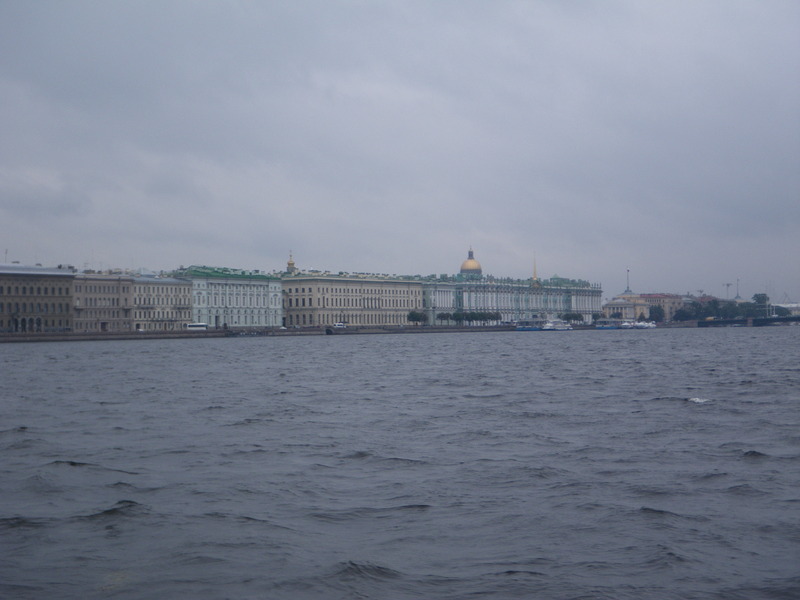



To get an idea of the scale of the Hermitage, it has everything from Egyptian mummies to (when I was visiting) a special exhibit on Santiago Calatrava, sculptures from Michelangelo and Canova, paintings from Reubens, El Greco, Leonardo, and Raffaello all the way to Gaugin, Renoir, van Gogh and Picasso. In 1931, when the Soviet government wanted to raise cash, it sold a mere 21 paintings to Andrew Mellon, who donated them to the U.S. Government to form the start of the National Gallery in Washington DC. It would be easy to spend a week in the Hermitage, and see many new and interesting artworks every day. I am not that patient, so I only spent an afternoon. I enjoyed the collection of sculptures by Canova, including this bust of Napoleon and this sculpture of Eros and Psyche.

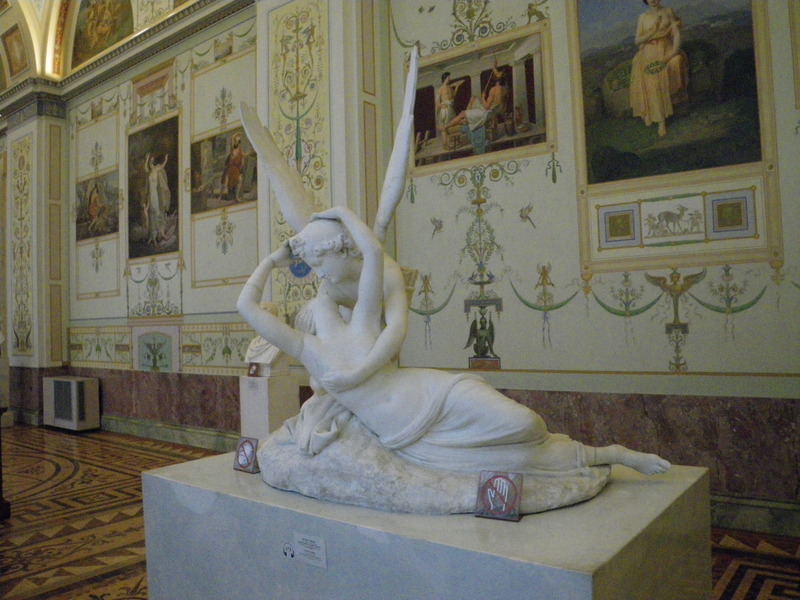

But really, I enjoyed a lot of things, not always the most famous. Here is a small sample.





As well as the artwork, the Hermitage itself, partly housed in the Tsars' Winter Palace, is quite impressive. I remember thinking they must have hired a number of architects and interior decorators, who probably loved the challenge of creating such impressive spaces.



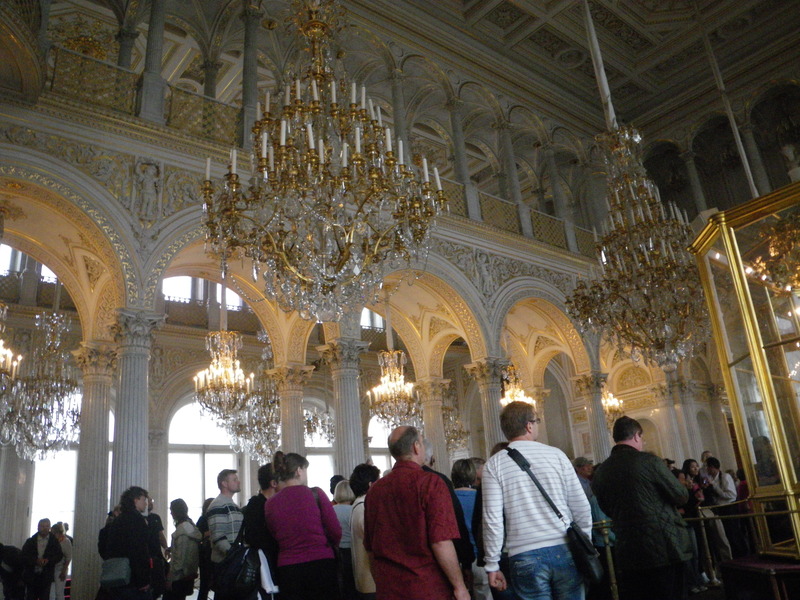
Long before the Hermitage became a Museum, Tsar Peter the Great built himself a villa on the shores of the Gulf of Finland, and called it Peterhof. Interestingly, Russian does not have a letter for 'H' (the letter that looks like 'H' is pronounced like 'N'), so the Russians call it Petergof. To get to Peterhof from St. Petersburg, I took a hydrofoil. The trip lasted less than my trip from Listvyanka to Irkutsk, also on a hydrofoil, but cost twice as much! Anyway, the views were nice, and it was nice to be out on the water.







Peterhof is sometimes compared with Versailles. It has beautiful gardens filled with fountains, a relatively small palace, and several beautiful little pavilions.





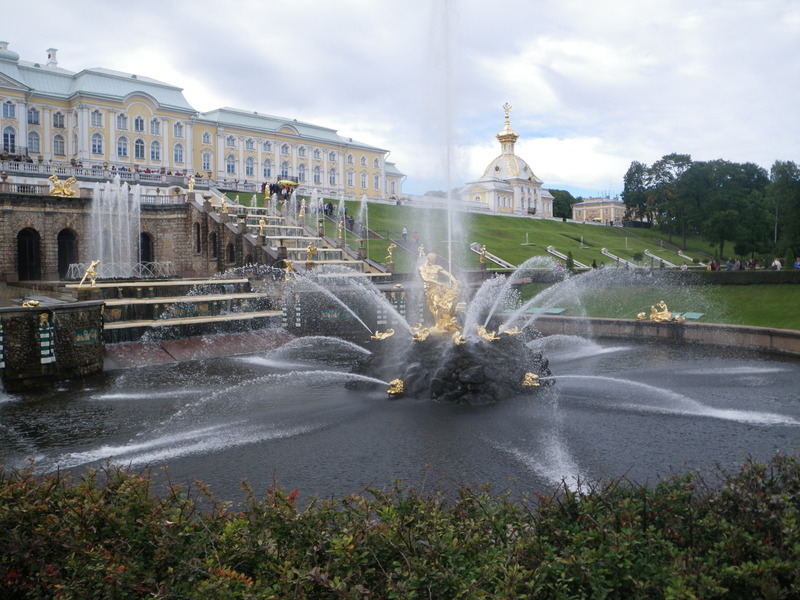








Personally, as well as the architecture and the gardens, I enjoyed being by the seashore, though from the plants I have seen, I would say the water here is probably either fresh or brackish rather than completely salty.



I returned to St. Petersburg by minivan (Marshrutka), which was a lot cheaper!
St. Petersburg has a number of canals, and is sometimes compared to Venice. In my opinion, St. Petersburg looks nothing like Venice, but I did take a boat ride along the canals. It was interesting in part because some of the bridges are very low -- signs on the boat say passengers must stay low when going under bridges, since it would be easy to bang a head on some of the lowest ones.
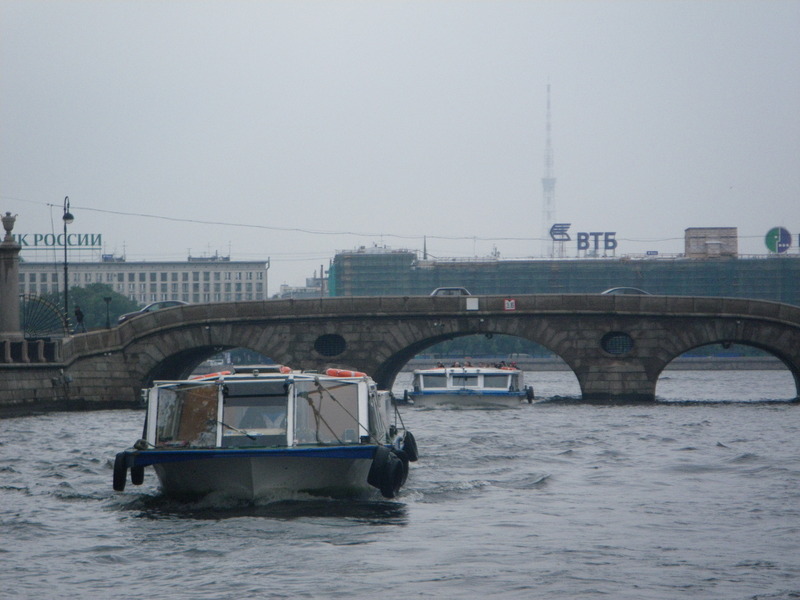



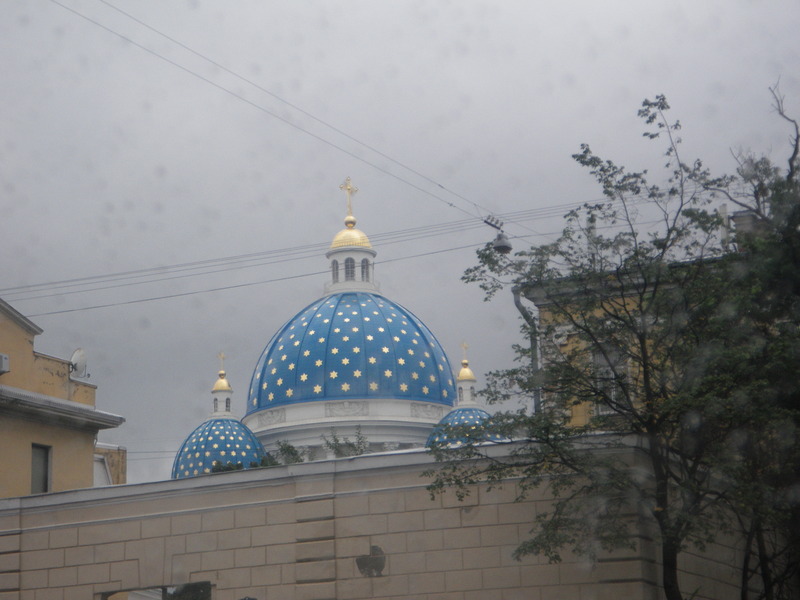

From the canal, we got a good view of St. Nicholas Cathedral.
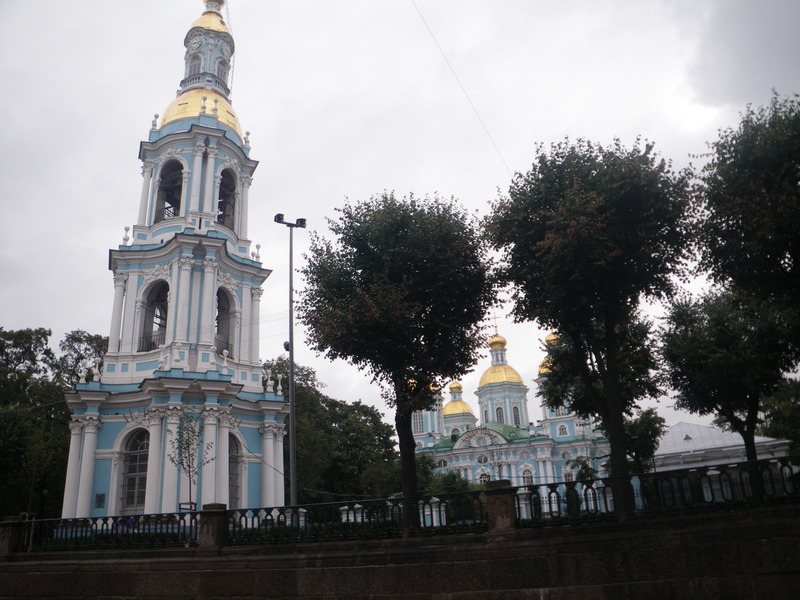

Some of the boats we passed were pumping a lot of water out the backs and the sides.

The Carthaginian fleet had reliably beat the Roman fleet, until the Romans devised a way to hook onto the enemy ship and fight the sailors as they would on land. Then, the Roman prowess prevailed, and the Romans beat the Carthaginians in 338BC. They were so proud of their victory that they permanently mounted the prows of the enemy ships. Back then, warships had a sharp and hardened prow that could be used to make holes in and sink enemy ships. Such a hardened underwater projection was called a rostrum, or rostra in the plural. The rostri were a favorite place for speakers in Ancient Rome. Somebody in 1800s St. Petersburg decided Rostral columns would be appropriate in Russia as well, though without including any actual parts of ships.


There is a park with a great statue of Catherine the Great. The great Statesmen at her feet include some of her known lovers.



Whoever designed the Cathedral of Our Lady of Kazan had been to Rome, Paris, or probably both. The colonnade resembles the colonnade outside the Vatican, and the dome reminded me of dome I had seen in Paris.


Tsar Alexander II was assassinated in 1881. There is now a beautiful church over the spot where he was attacked.


The double-headed eagle was a symbol of Russia during Tsarist times.

Outside the fashionable center of St. Petersburg is the Aleksander Nevsky Monastery, one of the oldest sets of buildings in St. Petersburg.

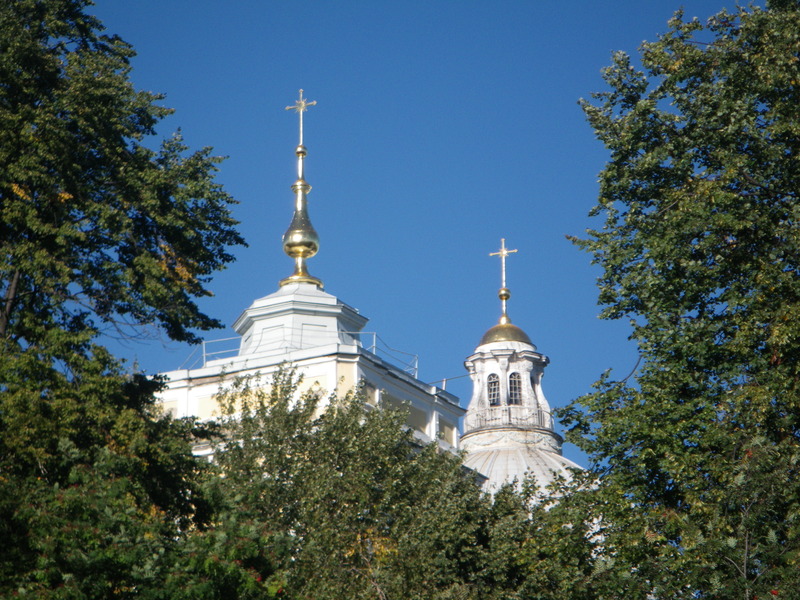
Near the monastery one tree was showing some nice fall colors.

One of the pedestrian bridges over a canal is supported by cables that come out of the mouths of briffins. For some reason, a graffiti on one of the griffins says "no sugar", which is the diet I keep.

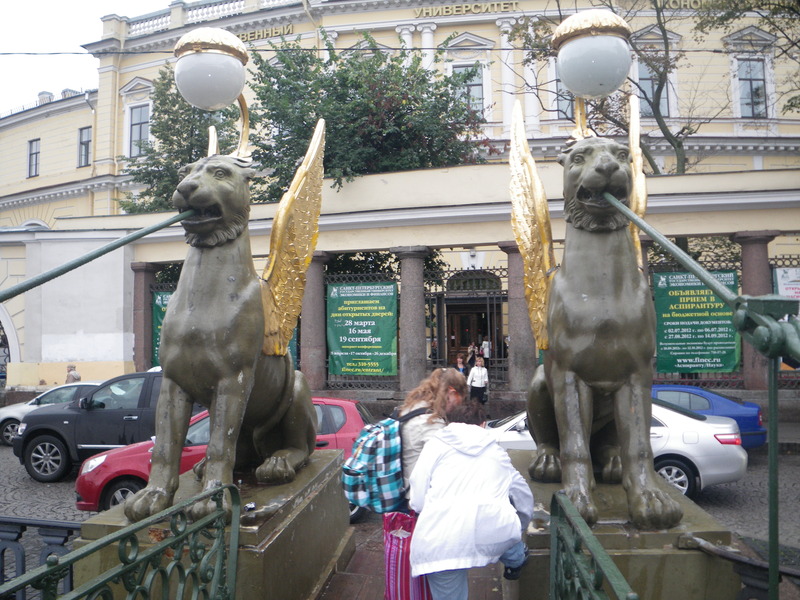
One day in St. Petersburg I was riding a bus in misty, rainy weather, and was told the weather was wonderful. Why? Because it was not cold and windy, I was told.

Fortunately, some of my time in St. Petersburg I had blue skies and clear weather.


While I still make many mistakes, I feel I have mostly learned the Russian alphabet. Since doing so, I have found many words I recognize. Interestingly, many of them seem to come from Western European languages. My room is on the 6th "etazh" (french "etage"), and when I exchange money, I exchange "valyuta" (italian "valuta"). It is interesting and wonderful to see how much and in what ways everyone is interconnected!!!